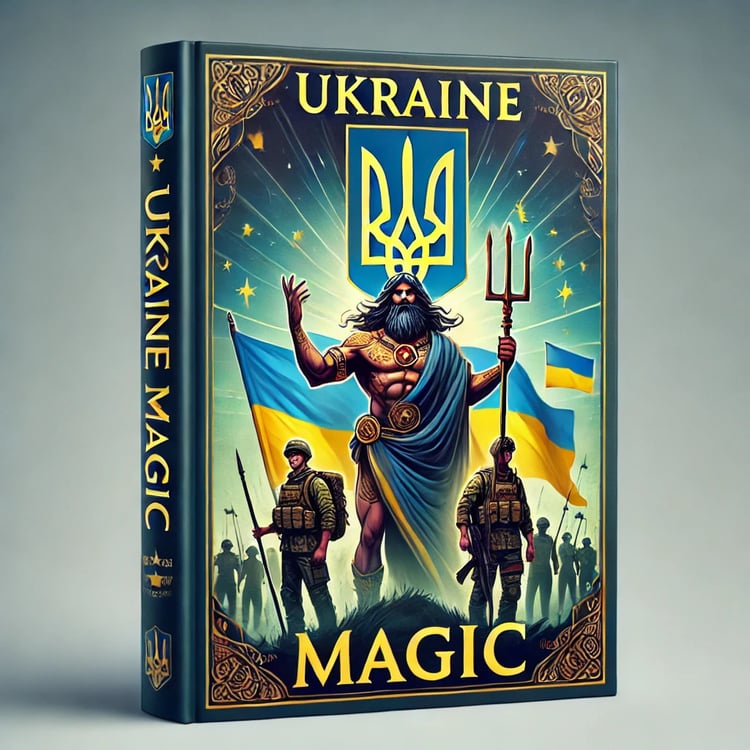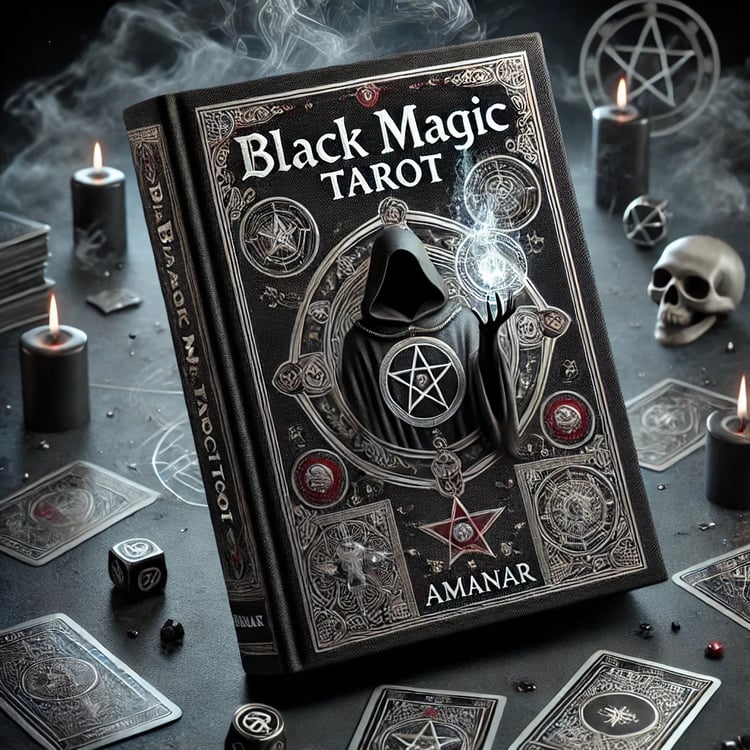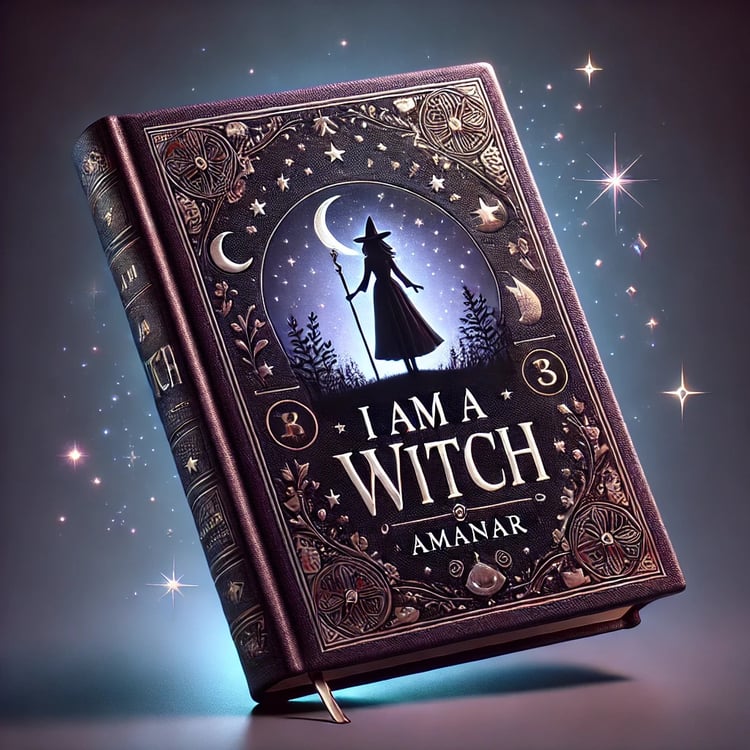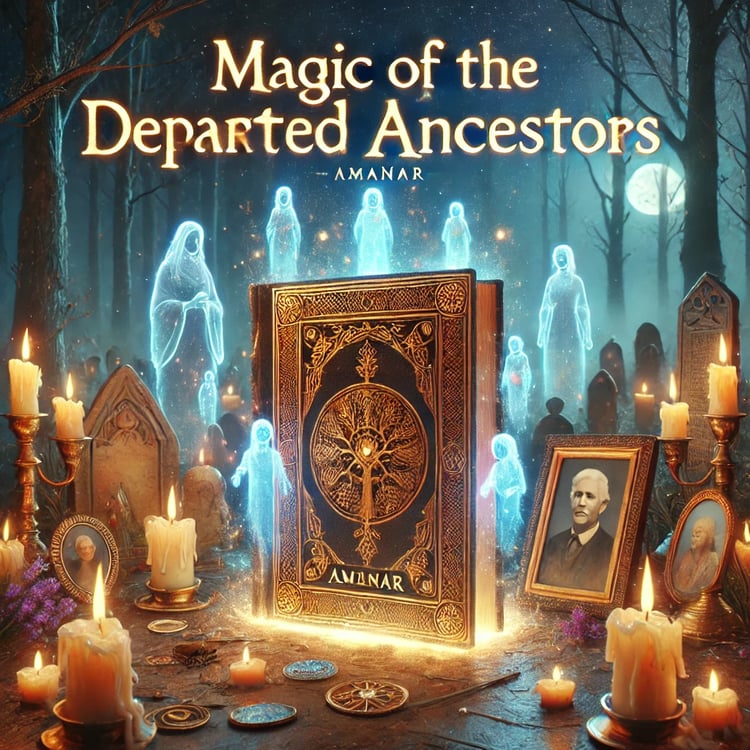
Amanar "Impure Forces at the Warlock’s Service"
Chapter 1: The Hidden Path of Unclean Forces
In this opening chapter, the reader is ushered into the dim corridors where forbidden knowledge lurks and shadows whisper their ancient incantations. Like a clandestine portal, these pages invite the seeker to abandon mundane certainties and immerse themselves in the living tapestry of Western magic, European witchcraft, Voodoo rites, and arcane tongues such as Latin and Sumerian. Woven throughout are tales of initiates who dared to call upon spirits lurking beyond the veil, pledging fealty to powers older than memory. It stands as both warning and invitation: once you step upon this crooked road, you cannot return unchanged. Here, the cunning arts are revealed in the hushed tone of an old grimoire, replete with the quiver of unseen energies stirring at its mention. The groundwork is laid for the entire text: the summoning of unclean forces into the employ of the master sorcerer, harnessing that which others fear in the pursuit of revelation.
Chapter 2: The Sorcerer’s Covenant with the Shadows
Delving deeper, we encounter the binding pacts and oaths that tether mortal ambition to spectral might. Blood-inked contracts, whispered vows in hidden shrines, rites performed by moonlight or in the hush of crypt-choked cathedrals—all are examined in austere detail. The reader is introduced to the solemn gravity of forging alliances with entities that dwell beyond mortal ken. This chapter resonates with the clang of iron keys turning in ancient locks, unveiling clandestine rituals from the Old World to the distant huts of voodoo priests. Here begins the careful instruction of language—Latin exorcisms, Sumerian conjurations, and archaic incantations that open secret doorways. Bound by secrecy and brimming with the hush of centuries, these passages guide the earnest student toward forging a sacred pledge and mark the dangerous threshold that stands between safe ignorance and perilous initiation.
Chapter 3: Anatomies of the Invisible Realm
From the swirling fog of astral planes to the lesser-known dominions that crawl beneath mortal awareness, this chapter dissects the skeletal framework of worlds unseen. Each realm is described as a living organism, pulsing with energies that can be lured, commanded, or placated. We examine the primal interplay between angels, demons, elemental spirits, and restless shades—an intricate dance that echoes through the hidden cosmos. Drawing upon Qabalistic diagrams and archaic European charts of the spirit realms, the text guides the seeker to comprehend cosmic pathways and astral intersections. In these dim passages, the veil between worlds thins, exposing the novice to wonders and terrors alike. Through cautionary tales and secret lore, the chapter reminds us that knowledge of the invisible realm can elevate a sorcerer beyond mortal confines or ensnare them in unyielding darkness.
Chapter 4: Instruments of Occult Mastery
In the dim light of candles and braziers, the aspiring adept begins crafting the physical tools of the sorcerer’s trade. Here, centuries-old traditions converge: the forging of ceremonial blades under planetary hours, the careful inscription of sigils onto virgin parchment, the shaping of waxen dolls for binding spells, and the anointing of talismans in oils infused with arcane herbs. Alchemical processes are sprinkled throughout, unveiling how metals, gemstones, and organic substances can be transformed into conduits of power. Amid these pages, the reverent hush of a workshop thrums with potential as pentacles, rods, and conjuration bowls are baptized in smoke and prayer. The chapter underscores that the mightiest oration or boldest incantation flounders without the sacred implements properly dedicated, for these instruments provide the channels through which unclean forces are beseeched and compelled to obey.
Chapter 5: Elemental Spirits and Their Dominion
An exploration of the swirling powers of earth, air, fire, and water, where each element reveals its host of lingering spirits. Drawing from European witchcraft and echoing Voodoo’s reverence for the crossroads, the text delves into the personalities and temperaments of the invisible creatures that personify each domain. We learn their preferred offerings—fresh blossoms for airy sylphs, molten wax for fiery salamanders, sacred salts for undines of the deep—and the dire consequences of misaligned pacts. Interwoven are conjuration formulas in Latin, tattered from ancient grimoires, and the oldest Sumerian phrases rumored to shake the foundations of reality. The prudent sorcerer must court these entities with equal measures of respect and command, ever vigilant that the swirling turbulence of elemental might can turn upon the summoner in a blink if propriety and honor are not upheld.
Chapter 6: Necromantic Murmurs and the Whisper of Graves
Beneath the moonlit sky, among the tombstones cracked by centuries of hush, lies the domain of the necromancer. This chapter draws aside the funeral veil to reveal the protocols and invocations needed to entice the departed from their eternal rest. The text breathes out of shadowy catacombs, cautioning that the stench of the grave can be a potent key to knowledge and power, but also a lethal snare for the unwary. Ceremonies that conjure spirits of the once-living are examined, weaving threads from old European funerary rites, Haitian Voodoo’s reverence for the Ghede, and biblical echoes of conjuring the dead. In these paragraphs, scrawled on parchment yellowed by time, the seeker is warned that to command the dead is to walk a harrowing tightrope between dominion and damnation. The slightest misstep invites curses and revenants to linger as wraiths upon the summoner’s threshold.
Chapter 7: The Art of Invoking Celestial and Infernal Hosts
Ascending from the nether gloom, we now turn our gaze upward to glean power from both heavenly choirs and infernal legions. By dissecting fragments of archaic Psalms, whispered in the crypts of medieval cathedrals, and collating them with monstrous conjurations from suppressed demonological texts, this chapter reveals how the sorcerer becomes the mediator between the highest and lowest strata of creation. Despite their grand opposition, both angelic and demonic forces can be manipulated through precise formulas and cunning use of sacred geometry. The reader is guided to construct oratories that serve as microcosms of cosmic power, employing resonant names of God and the infernal tongues in measured chorus. Cautious emphasis is placed upon the moral weight of these enchantments, for such conjurations can open a path to the divine just as swiftly as they can unleash a vortex of malevolence.
Chapter 8: Convergence of Voodoo and Western Witchcraft
Within these weathered pages, ancient European sorceries entangle with the vibrant pulse of Voodoo’s rites. Prayers intoned in half-forgotten Latin fuse with drums that echo through swamp and forest, merging into a tapestry of chanting, dancing, and shadow-casting. This chapter stands as a testament to the powers unleashed when distinct magical currents converge in the hidden sanctum of a cunning practitioner. Eyes and hearts must remain open to the synergy that arises when we invite the Loa into circles inscribed with planetary sigils. Readers are introduced to the sacrificial offerings of rum, tobacco, and cunningly carved fetish objects, bridging the gulf between the old Celtic wards and African diaspora spirits. The text celebrates a meeting of traditions once thought incompatible, culminating in a living force that stands at the threshold of new, formidable sorceries.
Chapter 9: The Qabalistic Key and the Tree of Shadows
Here, the venerable lore of the Qabalah is presented not in its austere temple vestments, but as a perilous map that can guide or mislead an incautious adept. Veiled references to the dark side of the Sephiroth—the Qliphoth—are unearthed, revealing how shadow energies siphon and distort the divine emanations. Detailed references to Hebrew letters and their hidden potencies converge with cryptic inscriptions in Latin, forging a labyrinthine system of reflection and inversion. The text urges the student to tread softly on this precarious path, for each sphere can become a gateway to brilliance or corruption. The chapter resonates with whispering echoes of angelic script and demonic hush, reminding the practitioner that the greatest revelations often dwell beyond mortal morality, beckoning those who dare to peer into the Tree’s hollowing depths.
Chapter 10: The Hermetic Craft and Alchemical Transfiguration
With a steady hand and a fervent heart, the sorcerer turns to the laboratory, where bubbling retorts and glass alembics stand as silent witnesses to experiments older than recorded history. This chapter peels back the secrets of Hermetic science, wherein mercury, sulfur, and salt act as living symbols for the alignment of spirit and flesh. Weaving the transformations of metal with the subtle evolution of the sorcerer’s own soul, the text describes the delicate dance of purification, dissolution, and crystallization. Each crucible becomes a mirror of one’s inner metamorphosis: base impulses transmuted into luminous virtue or harnessed to sharpen one’s dominion over unclean forces. Though the brunt of the alchemical process is hidden behind cryptic metaphors and arcane ciphers, this chapter offers a guiding spark, reminding us that to mold reality one must first transform the self into a vessel worthy of channeling cosmic flame.
Chapter 11: Blood Rites and Bone Charms
In these darksome paragraphs, we descend into the primal magic of life’s vital fluids and the immutable echoes housed in skeletal remains. From European witches who pricked their fingers on full-moon nights, to the twisted ceremonies within the jungles of West Africa, the text provides a candid glimpse of how blood, bone, and the essence of living creatures may become cornerstones in certain rites of power. An undercurrent of caution hums through every line—working with the raw substance of life invites powerful results but flirts with an invitation to malignant watchers. The adept is reminded to treat these rites with unyielding reverence, forging protective circles with unwavering precision. For all the primal potency awakened when blood meets bone, these arts exact a toll, and only those possessed of unwavering conviction should dare lift the chalice of these forbidden mysteries.
Chapter 12: Dreamscapes and Phantasmal Allies
Beyond the threshold of ordinary consciousness lies a landscape woven from the realm of dreams, where illusions mingle with truths unspoken by the waking world. In this chapter, old incenses of poppy and mugwort burn in braziers of hammered iron, preparing the mind for guided journeys through the sleeping soul. Combining ceremonial structures with the fluid spontaneity of dream magic, the sorcerer can summon phantasmal guides or glean cryptic revelations, each more vibrant than the last. Deeds undertaken in these oneiric temples carry consequences that ripple into waking reality, binding or releasing energies untamed by logic. The text regales us with cautionary accounts of dreamers trapped in labyrinthine illusions, reminding novices that while the dreamscape offers ephemeral wonder and secret knowledge, it also harbors cunning illusions eager to ensnare those too enthralled by fleeting marvels.
Chapter 13: Forbidden Tongues and the Power of Ancient Words
Rising from the clay of Sumer to the lost spires of Babel, the potency of language reverberates through history as both weapon and key. This chapter ventures into the labyrinth of archaic scripts—Enochian emanations, primal Sumerian syllables, and esoteric Latin verses—each said to unlock hidden chambers of creation. The practice of phonetic incantations, carefully enunciated to resonate with unseen planes, is described in mesmerizing detail. Readers are invited to linger upon each syllable, feeling the shift in cosmic currents as the incantation weaves through the tapestry of existence. The text cautions that language is a living entity, and mispronunciation can summon twisted reflections of intended powers. Deep reverence for the Word forms the crux of this chapter, for it is said that with a single, properly intoned phrase, the adept can crack wide the gates to wonder—or calamity.
Chapter 14: Summoning Familiars and Bound Servitors
Herein, the practical conjurer learns to procure the services of lesser spirits, familiars, and thought-forms shaped by focused will. From the toad-cats rumored in medieval Europe to shimmering sylph-like guardians of the air, the summoner’s stable of aides can be as varied as the stars in the night sky. Ingredients for the creation of homunculi are carefully alluded to, as well as the intricacies of bonding an elemental entity to a crafted vessel. The text provides the subtle prayers and calls to entice ephemeral beings, be they shadows from lonely crossroads or wisps of astral luminescence. The promise of unwavering devotion draws eager aspirants, yet the chapter also enumerates the dangers of enslaving spiritual entities. A wise master remembers that servitude can breed resentment, and the line between loyal familiar and vengeful stalker is perilously thin.
Chapter 15: Ceremonial Circles and the Geometry of Control
In the circular boundary etched upon sanctified ground, the sorcerer becomes a conductor of energies, directing the subtle symphony of the unseen. Detailed instructions on how to measure and inscribe the circle, including the cardinal points and sacred names, lend the text a sturdy backbone of practicable craft. The geometry extends beyond mere shapes, transcending into a cosmic blueprint that anchors the conjurer’s will. Ancient glyphs from Qabalistic traditions combine with swirling lines reminiscent of Voodoo vévés, forming an integrated system that wards against intrusions while magnifying the conjurer’s call. Through these pages, the circle takes on the role of fortress and altar, conferring both protection and dominion. With vigilance, a well-drawn circle grants the power to constrain infernal legions or hush tempestuous spirits. Neglect a single line, however, and the entire working can collapse into chaos, leaving the practitioner exposed to forces without mercy.
Chapter 16: The Witch’s Flight and Astral Journeying
Casting aside physical limitations, the adept seeks the liberation of flight both literal and symbolic. The bristling midnight broom of folklore merges with elaborate astral projection techniques taught in secret lodges, painting the sky with motes of possibility. Through incenses brewed from hallucinogenic herbs or purely meditative discipline, the sorcerer learns to extend consciousness beyond flesh, glimpsing realms where dream merges with truth. Stories of covens meeting in remote astral groves echo the hush of old English moors, dancing in tandem with the echoes of Haitian gatherings beneath star-laden skies. The text offers direction on how to return safely, advising warding charms to shield the traveling spirit from predatory phantoms. Yet every word resonates with the allure of unchained freedom, an ancient vow that through magic, one can unbind the fetters of time and space, gliding between worlds to gather knowledge unknown to sleeping minds.
Chapter 17: Hexes, Curses, and the Ethics of Baneful Magic
In a realm where darkness and light are tools to be wielded, the discussion of baneful magic is inevitable. This chapter draws from grim tradition: the maleficia of medieval Europe, the dreaded “point of death” curses from voodoo’s fearsome repertoire, and the cunning hexes wrought by cunning folk with a single rag doll. Each page crackles with dire admonitions that while baneful spells promise swift vengeance or retribution, they carve a heavy brand upon the soul. The adept is urged to weigh the moral and spiritual cost of cursing another, for the tether of ill-intent can easily recoil upon its source. Yet knowledge of these arts remains crucial, whether for defense or deterrence, and so the text divulges the signals, words, and gestures that harness the heavy gloom of unclean forces. With unblinking candor, it cautions that in the labyrinth of curses, the greatest threat may arise not from the target, but from the simmering darkness festering within one’s own heart.
Chapter 18: Ritual Possession and the Shadowed Self
When the sorcerer stands upon the threshold of their own consciousness, they may invite a spirit or deity to inhabit the vessel of flesh. Voodoo practitioners term it “mounting,” while European grimoires speak in hushed breath of letting an angelic or demonic presence overshadow the soul. This chapter illuminates the methods by which one safely courts possession, outlining the wards, incenses, and chants that render the human form an accommodating host. Yet these pages hold dire warnings: once a spirit enters, it may not depart willingly. The boundaries between the self and the entity can blur, unleashing hidden impulses and forbidden desires. The adept is walked through practical steps to reassert dominion, or to seal a fruitful partnership that channels the spirit’s might. An undercurrent of both dread and ecstasy thrums here, for to share one’s body with unclean forces can offer ephemeral mastery or timeless damnation.
Chapter 19: The Grand Rite of Alignment and Power
Gathering all the threads woven through preceding chapters, this portion reveals a grand ceremony by which the sorcerer summons every aspect of the unclean forces into a harmonious act of will. Emblems of the four elements, conjurations of necromantic spirits, and the resonant hum of angelic and demonic incantations intertwine in a single spectacular rite. Building upon Qabalistic charts and Voodoo rhythms, the text outlines a synergy so potent it is said to warp the very fabric of fate. Immense caution is stressed: any misalignment in the ritual steps can rend open the protective veil and invite an onslaught of chaotic energies. Yet success promises a pinnacle of power, the triumphant roar of dominion over the seen and unseen. In the hush of success, the sorcerer stands as a conduit between worlds, forging a luminous moment where unclean forces become instruments of sacred evolution.
Chapter 20: Evading the Wrath of Higher Powers
Triumph in the arts of commanding unclean forces often stirs the watchful gaze of higher beings—be they protective guardians of cosmic order or rival sorcerers seeking to usurp your throne. This chapter lays bare the stealthy maneuvers and protective wards that veil one’s workings from prying astral eyes. The cunning adept learns to cloak themselves in illusions, forging subtle illusions that deceive even the keenest watchers. Reflective sigils, reverse incantations, and sacrificial illusions conjured in the dead of night all conspire to misdirect vengeful powers. The text draws from cunning men’s folklore and the labyrinthine strategies of cunning women who eluded the Church’s wrath in centuries past. By absorbing these lessons, the reader secures themselves against retribution that so often follows those who dare to bend unclean forces to their designs.
Chapter 21: Trials of the Adept and the Mastery of Fear
Before the final ascent, the sorcerer must confront their own reflection cast in darkness. Invariably, every path of power demands an inward reckoning wherein guilt, doubt, and dread may swell into monstrous forms. Drawing on cautionary narratives from every branch of esoteric practice, the text probes the merciless trials that test the soul. Here the adept confronts illusions conjured from personal demons, the living regrets that roam the labyrinth of memory, and the final gatekeeper—the self. The ancient scribes insisted that only through such harrowing encounters can the aspirant glean the resilience and purity to stand firm in the face of cosmic terror. This chapter fosters a solemn acceptance that fear itself is a teacher, a crucible forging the true master from raw mortal clay. Those who remain steadfast emerge capable of wielding unclean forces without succumbing to their seduction.
Chapter 22: The Crown of the Unclean and the Rise of the New Magus
In this culminating chapter, all strands of knowledge, technique, and devotion meld to proclaim the dawn of the reader’s own reign. Having navigated pacts and conjurations, forging alliances with shadowy powers, and enduring the labyrinthine challenges of the occult path, the sorcerer stands poised upon the precipice of self-creation. Rites of coronation are detailed in archaic Latin, bestowing upon the adept the mantle of master. The synergy of Voodoo and Western Magic, the hush of Qabalistic secrets, and the rhythmic pulse of primal incantations each finds its place in the crowning ceremony, welcoming the newly anointed magus into a circle of ancestors and spirits. Here, the text resonates with a final exhortation that knowledge must be tempered by wisdom and boldness by caution. With the last lines penned in cryptic runes, the door stands open for the fearless to carve their own legacy among the hidden dominions of the world, enthroned with the unclean forces at their command.
Amanar










